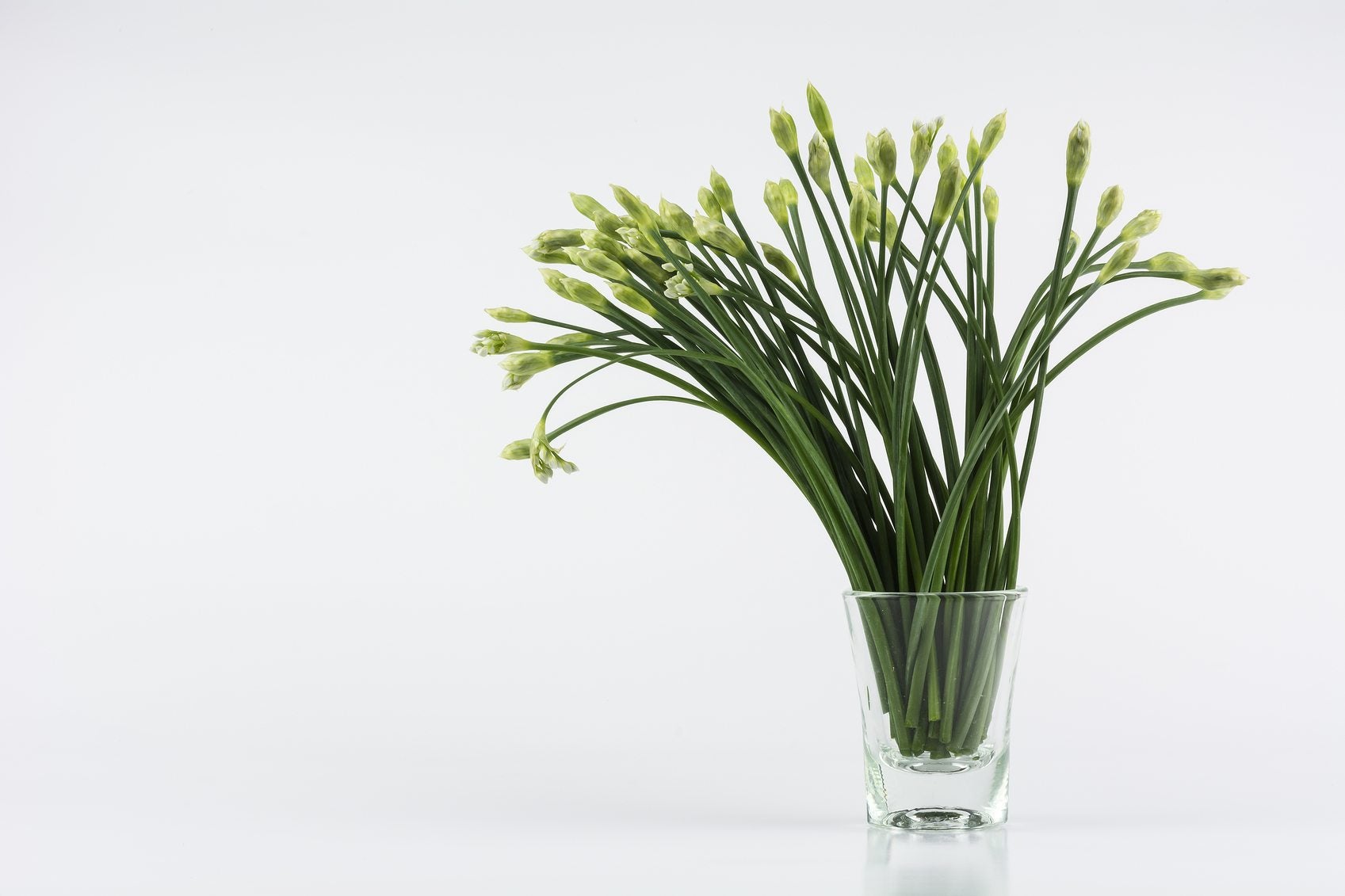How To Regrow Garlic Chives: Growing Garlic Chives Without Soil


The economy goes up whether we are ready for it to or not. So, finding ways to save money is key to keeping a healthy budget. Growing your own food is a perfect way to save funds and feed the family healthy dishes. Having herbs like a garlic chives plant ensures that homegrown produce will always have maximum flavor. You can even eat or garnish with the beautiful garlic chive flowers. Growing garlic chives from seed is time consuming, but a plant will quickly establish from cloves or bulbs. Growing a garden provides the opportunity to season with organic ingredients just outside the door. It is not only a joy to produce one's own food, but a frugal tip that can stretch the budget. For example, just one garlic chives bulb will produce tons of slender, green leaves to zest up recipes. Re-growing kitchen scraps is one easy way to keep flavor fresh in favorite recipes.
Growing a Garlic Chives Bulb
Growing garlic chives from seed will result in spindly little shoots eventually, but the wanted bulb will take a very long time. If you want to just grow the shoots for cooking, the fastest way is with a garlic clove. The garlic chives aren't as robust as mature garlic scapes, but add a gentle, mellow, garlic flavor to recipes. The shoots look similar to scallion greens but are less oniony and more garlicky. They sprout from the clove and are the first sign of growth in garlic. Garlic left in a cool, dark location may sprout on its own without any intervention. Garlic that has started sprouting can be pulled apart into individual cloves to grow on or can be left whole. Each clove will eventually send out sprouts in proper conditions.
How to Start Garlic Chives
Soil is not necessary for growing garlic sprouts. To start sprouts you will need a shallow dish or glass and water. Place the clove or the whole garlic bulb in the container with the rooting end down. This is the flat bottom of a bulb, or in the case of a clove, the scarred area opposite the pointed tip. Submerge the bottom in water. Change the water every few days to prevent pathogens like molds. In just a few days you will begin to see bright green shoots. Let them grow to the height you require and harvest them by cutting them off. More shoots will soon reappear.
Planting Sprouted Garlic
Once the garlic has sprouted, it will keep forming shoots for a time. To really get growing, though, it will need some nutrients. Plant each clove in potting soil in a depth twice its length. Keep moderately moist and allow shoots to form. Over time the plant will produce more garlic bulbs. The shoots should remain on the plant to photosynthesize and drive bulb formation. When scapes form, they may be removed and eaten. If you want to try growing garlic chives from seed, sow seed in starter mix in flats and water. Soon little fine green shoots will appear. If your goal is to get bulbs, leave these alone and let the plants grow. Thin if necessary and transplant when they are several inches tall (8 cm.). The seedlings will form bulbils and eventually, after more than a year, will develop bulbs.
Sign up for the Gardening Know How newsletter today and receive a free copy of our e-book "How to Grow Delicious Tomatoes".

Bonnie Grant is a professional landscaper with a Certification in Urban Gardening. She has been gardening and writing for 15 years. A former professional chef, she has a passion for edible landscaping.